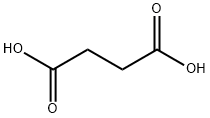Uses and Preparation of Succinic acid
Mar 31,2022
General description
Succinic acid(SA) is an alpha,omega-dicarboxylic acid resulting from the formal oxidation of each of the terminal methyl groups of butane to the corresponding carboxy group. It is an intermediate metabolite in the citric acid cycle. It has a role as a nutraceutical, a radiation protective agent, an anti-ulcer drug, a micronutrient and a fundamental metabolite. It is an alpha,omega-dicarboxylic acid and a C4-dicarboxylic acid. It is a conjugate acid of a succinate(1-).
Uses
As one of the intermediate products occurring in the biological tricarboxylic acid (TCA) cycle, succinic acid is widely applied in food, medicine, surfactants, biodegradable plastics and other industries. Moreover, succinic acid is the precursor for the synthesis of polyethylene succinate, which has been widely used as a basic material in the plastics industry [1]. Currently, SA finds application as a surfactant,an ion chelator, an additive in agricultural and food,and in the pharmaceutical industries[2]. In fact,SA can also be used for the synthesis of the biodegradable plastic polybutylene succinate (PBS), polyester polyols, plasticizers, polyurethanes and 1,4-butanediol (1,4-BDO)[3].Besides,Succinic acid, extracted from amber, is widely used in cardiovascular therapy.
Preparation
1. Oxidation method. The paraffin wax is deeply oxidized to form a mixture of various carboxylic acids, and then succinic acid can be obtained after separation steps such as steam distillation and crystallization.
2. Hydrogenation method. Maleic anhydride or fumaric acid is hydrogenated under the action of a catalyst to generate succinic acid, which is then separated to obtain the finished product. The catalyst is nickel or precious metal, and the reaction temperature is about 130-140°C.
3. Acrylic acid oxo synthesis. Acrylic acid and carbon monoxide generate succinic acid under the action of a catalyst. This method is not yet industrialized.
4. Electrolytic oxidation method. Phthalic anhydride, sulfuric acid and water are electrolyzed in a ceramic electrolytic cell in a ratio of 1:0.5:4 to obtain succinic acid. The raw material of electrolytic synthesis is maleic acid or maleic anhydride, and the anion and anolyte are separated by dilute sulfuric acid, which is separated by a cationic membrane.
5. Acetylene method. Acetylene reacts with carbon monoxide and water in the presence of [Co(CO)4] catalyst in an acidic medium to obtain succinic acid. The reaction temperature is 80-250°C and the pressure is 2.94-49.03MPa.
6. Emerging fermentation method. Compared with traditional chemical methods, the production cost of microbial fermentation is competitive, and it uses renewable agricultural resources including carbon dioxide as raw materials, avoiding the dependence on petrochemical raw materials and reducing the environmental pollution caused by chemical synthesis processes.Among those, a capnophilic bacterium A. succinogenes, which could produce comparatively large amounts of succinic acid is recognized as one of the most promising microorganisms for industrial succinic acid production (Carvalho et al., 2016).
Pharmacological action
Current studies have shown that succinic acid or its derivatives exhibit anticancer activity by inducing apoptosis[4].5 and 10 µM concentration of succinic acid resulted in apoptosis in endometrium cancer[5]. The first downstream processing step is cell separation by centrifugal separation or microfiltration, usually followed by ultrafiltration to separate celldebris, proteins and other polymers from the fermentation supernatant. For the isolation and concentration of succinic acid many unit operations have been suggested: precipitation with ammonia or calcium hydroxide, membrane processes such as electrodialysis, liquid–liquid extraction such as predispersed solvent extraction with colloidal liquid aphrons or reactive extraction. Different sorption/ion exchange methods and crystallization are the methods of choice for the final purification of the isolated acid[6].
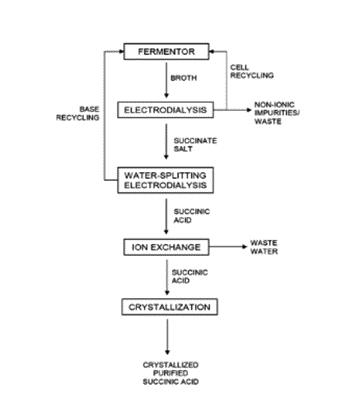
Figure 2 Process with electrodialysis and water-splitting electrodialysis
References
1.Lu J, Li J, Gao H, Zhou D, Xu H, Cong Y, Zhang W, Xin F, Jiang M. Recent progress on bio-succinic acid production from lignocellulosic biomass. World J Microbiol Biotechnol. 2021 Jan 4;37(1):16. doi: 10.1007/s11274-020-02979-z. PMID: 33394223.
2.Zeikus JG, Jain MK, Elankovan P. Biotechnology of succinic acid production and markets for derived industrial products. Appl Microbiol Biotechnol. 1999;51:545–552.
3.McKinlay JB, Vieille C, Zeikus JG. Prospects for a biobased succinate industry. Appl Microbiol Biotechnol.2007;76:727–740.
4.Kasarci G, Ertugrul B, Iplik ES, Cakmakoglu B. The apoptotic efficacy of succinic acid on renal cancer cell lines. Med Oncol. 2021 Oct 23;38(12):144. doi: 10.1007/s12032-021-01577-9. PMID: 34687367.
5.Iplik ES, Catmakas T, Cakmakoglu B. A new target for the treatment of endometrium cancer by succinic acid. Cell Mol Biol (Noisy-le-grand). 2018 Jan 31;64(1):60-63. doi: 10.14715/cmb/2018.64.1.11. PMID: 29412795.
6.Kurzrock T, Weuster-Botz D. Recovery of succinic acid from fermentation broth. Biotechnol Lett. 2010 Mar;32(3):331-9. doi: 10.1007/s10529-009-0163-6. Epub 2009 Nov 8. PMID: 19898782.
- Related articles
- Related Qustion
- Succinic Acid: Solubility and Mechanism of Action Nov 22, 2022
The passage introduces the solubility and mechanism of action of succinic acid.
Ammonium sulfate is an inorganic sulfate salt obtained by reaction of sulfuric acid with two equivalents of ammonia. A high-melting (decomposes above 280℃) white solid which is very soluble in water....
Mar 31,2022DrugsDimethyl malonate is a general organic reagent, and dimethyl malonate is an important raw material for the production of pharmaceutical pipemidic acid.....
Mar 31,2022APISuccinic acid
110-15-6You may like
- Succinic Acid
-
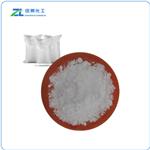
- $120.00 / 1kg
- 2024-04-27
- CAS:110-15-6
- Min. Order: 1kg
- Purity: 99%
- Supply Ability: 20ton
- Succinic acid
-
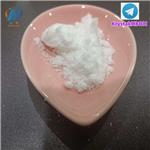
- $1.00 / 1KG
- 2024-04-27
- CAS:110-15-6
- Min. Order: 1KG
- Purity: 99.91%
- Supply Ability: 200000
- Succinic acid
-
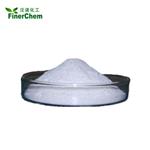
- $0.00 / 25kg
- 2024-04-26
- CAS:110-15-6
- Min. Order: 1kg
- Purity: ≥99.5%
- Supply Ability: 2000mt/year




